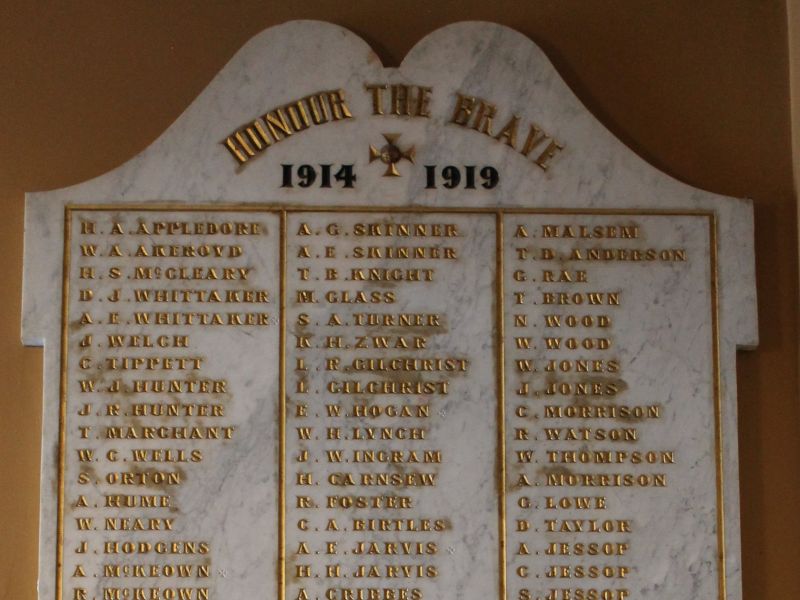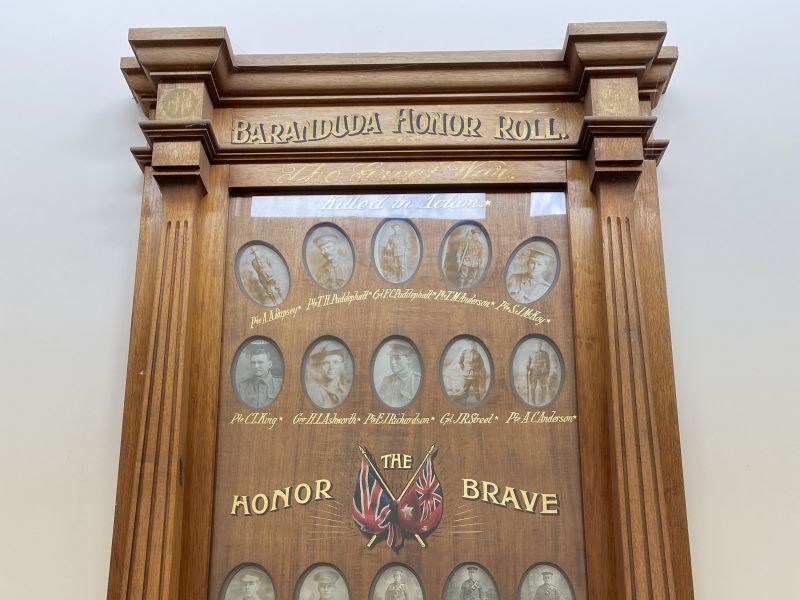Thomas Henry Puddephatt
Thomas was born in 1879 at Yackandandah, Victoria. He was one of nine children of John Joseph and Ann (née Higgins) Puddephatt. The 1912 Electoral Role for the Indi region of Victoria indicates that Thomas was working as a bridge carpenter with the NSW Government Railways and Tramways. Some of his spare time was devoted to being an active member of the Wodonga Rifle Club.
On the 25th of June Thomas’ father, John, passed away in Beechworth at the age of 66. Nine years prior to his death, John had sustaineda fractured skull, the result of a fall from his wagon. Since the accident he had been an invalid.
Thomas enlisted on the 3rd of August, 1915 at Broadmeadows Camp. Two weeks prior to this he had undertaken his medical back in Wodonga. At 36 years of age he was placed into the 12th Reinforcements for the 6th Infantry Battalion and was allotted the Regimental Number 3914. While undergoing his ten weeks initial training at Broadmeadows he was a member of C Company of the 10th Depot Battalion.
The SS Ceramic was an 18481 ton, three screwed passenger ship that was a frequent traveller between Liverpool and ports in Australia. It was on this ship, now named HMAT A40 Ceramic, that Thomas embarked on at Melbourne on the 23rd of November, 1915. On the 22nd of February of 1916, Thomas was taken on strength with the 6th Battalion at Serapeum in Egypt. His stay with the 6th was not to be a long one, as the army must have recognised his construction skills. On the 12th of March he was transferred to the 1st Pioneer Battalion. Two weeks later his unit embarked on the Ballarat at Alexandria and were shipped across the Mediterranean to Marseilles in the south of France.
Three weeks after arriving in France, Thomas was listed as being killed in action. His Red Cross Society Wounded and Missing Enquiry Bureau file provides a witness account from 4145 Pte. A.B. Bond, B Company, 1st Pioneer Battalion, describing how he was killed.
“Puddephat [sic] was killed by shrapnel at Cellar Farm near Levantis on April 25th. Another man was killed by the same shell and two others, Plumb and Anderson, were wounded. They were with a party which was filling in earth behind the parapet. I saw Puddephat go down. His body was buried in the cemetery near Cellar Farm.”
Thomas was buried in the Rue-Petillon Military Cemetery, Plot I, Row H, Grave 66, in France. The Reverend R. A. Harris, Chaplain attached to the 1st Australian Divisional Pioneer Battalion, conducted the service. Thomas is also remembered at the Australian War Memorial Roll of Honour, the Branduda Pictorial Honour Roll, the Beechworth War Memorial, and the Haymarket NSW Government Railway and Tramway Honour Board. For his service he was awarded the 1914-15 Star, the British War Medal and the Victory Medal.
Amongst the documents and letters in Thomas’ service record is one from the Australian Imperial Force, Base Records, asking Thomas’ mother the following question;
“It is noted that you are registered on the records of the late No. 3914, Private T.H. Puddephat of the 1st Pioneer Battalion as next of kin, but, in order for our file may be brought up to date, it is desired to learn whether the above named soldier had any nearer blood relations than yourself, for instance, is his father still alive.”
It’s not known what Anne Puddephatt’s immediate reply to this question was. It’s quite possible that she asked herself what closer blood relative to a child can there be other than his mother. Her written answer was;
“Dear Sir
In answer to your letter of the 17th July 1920 re - the late No. 3914 Private Thomas Henry Puddephatt, 1st Pioneer Battalion, as to whether his Father is still alive. The answer No! …

 Stephen Learmonth
Stephen Learmonth
